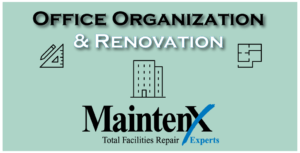
If you’ve been down the lighting aisle of a hardware store in the last couple years, you might be scratching your head at all the new and strange options in front of you. Take a deep breath, and let us guide you through the different varieties of light bulbs on the market.
Incandescent
These are the standard bulbs that most of us think about when we think of a light bulb. Incandescent bulbs work by using electricity to heat a tungsten filament (a resistor) within the bulb. Most of the energy consumed by the bulb is given off as heat, making it comparatively inefficient. Their effective lifespans are comparatively short, too, as the filament wears out.
Halogen Incandescent
These create the same amount of light as incandescent bulbs, but they also save around 25% on energy costs! They tend to be a bit more expensive than traditional bulbs but are cheaper than LEDs or CFLs.
Fluorescent
You’re probably quite familiar with the long glass tubes seen on department store ceilings. This type of bulb contains mercury vapor that converts UV light to visible light. Because these bulbs contain mercury, they can be dangerous if not handled correctly. In most places, there are regulations for proper disposal. Though their light is often unattractive, they’re more energy efficient than incandescents.
Compact Fluorescent Lightbulbs (CFLs)
CFL lighting is diffused, so colors appear duller than under incandescent light, and they’re usually not dimmable. But if you find one with the right color temperature, CFLs can work nicely in table or floor lamps. They’re quite efficient and last longer than incandescents.
LED
Light emitting diode (LED) bulbs are currently the most energy-efficient light bulbs available. Though they used to be quite expensive, prices have dropped significantly in recent years. With lifecycles which far surpass those of most other bulbs on the market, dimming capabilities, color options, and extreme energy efficiency, LEDs are an all-around-great option for most uses.


 One of the key factors in running a successful business is staying relevant in your market. Whether you are trying to attract new clients, new employees, or keep your existing base intact, relevancy helps you stay in front of your competition. Sometimes the easiest way to become more relevant is to give your facility a facelift. Here are some reasons why you may want to consider this.
One of the key factors in running a successful business is staying relevant in your market. Whether you are trying to attract new clients, new employees, or keep your existing base intact, relevancy helps you stay in front of your competition. Sometimes the easiest way to become more relevant is to give your facility a facelift. Here are some reasons why you may want to consider this. If it is time to renovate your workplace but you can’t afford to lose any business in the process, planning can be stressful. Not every business can do overnight renovations; they’ll require a team to be in place during normal business hours to finish the project. Extra bodies, noise, and debris can be a big turnoff to your patrons, especially in customer-driven businesses like restaurants and retail. Here are 3 tips to help keep business booming during a renovation.
If it is time to renovate your workplace but you can’t afford to lose any business in the process, planning can be stressful. Not every business can do overnight renovations; they’ll require a team to be in place during normal business hours to finish the project. Extra bodies, noise, and debris can be a big turnoff to your patrons, especially in customer-driven businesses like restaurants and retail. Here are 3 tips to help keep business booming during a renovation. Water damage looks bad, but it can also become a serious threat to your building if it isn’t properly addressed. One of the most common sites for water damage is your ceiling. This is because the source of the issue, a leaky roof, can often go unnoticed until it’s too late, resulting in a giant eyesore staring down at you. Do you know what to do if this happens?
Water damage looks bad, but it can also become a serious threat to your building if it isn’t properly addressed. One of the most common sites for water damage is your ceiling. This is because the source of the issue, a leaky roof, can often go unnoticed until it’s too late, resulting in a giant eyesore staring down at you. Do you know what to do if this happens?  When was the last time you took a walk around the outside of your building and really inspected the area? Did you get down and pay close attention to your building’s foundation? Most often, business or building owners don’t personally examine the exterior. Landscape and facility maintenance teams are there to keep the exterior looking beautiful and well-manicured, so foundational cracks can be overlooked. But cracks in your foundation can lead to severe problems like building erosion and even mold.
When was the last time you took a walk around the outside of your building and really inspected the area? Did you get down and pay close attention to your building’s foundation? Most often, business or building owners don’t personally examine the exterior. Landscape and facility maintenance teams are there to keep the exterior looking beautiful and well-manicured, so foundational cracks can be overlooked. But cracks in your foundation can lead to severe problems like building erosion and even mold.  Mold is frightening to any home or business owner. The threat of mold spores traveling through your walls and into your HVAC system, completely taking over your building, is a very real one here in Florida. The climate is hot and humid, and storm season lasts through Summer and Fall, so mold is just something that business owners must consider. So how do you combat foundational mold once it has arrived? Let’s look at what to do.
Mold is frightening to any home or business owner. The threat of mold spores traveling through your walls and into your HVAC system, completely taking over your building, is a very real one here in Florida. The climate is hot and humid, and storm season lasts through Summer and Fall, so mold is just something that business owners must consider. So how do you combat foundational mold once it has arrived? Let’s look at what to do. Just the thought of organizing your office can be overwhelming. Where do you start, and what do you do with all your stuff? Here are some tips to help you successfully navigate the process.
Just the thought of organizing your office can be overwhelming. Where do you start, and what do you do with all your stuff? Here are some tips to help you successfully navigate the process. The dream of having the big office in the corner is starting to fade away. Not because promotions are harder to come by; rather, most offices just don’t have large offices anymore. Space is becoming a bigger issue due to a tight labor market and high property values. Whether you’re in a cubicle, shared office or small home office, storage is a problem; reserving space for employees is obviously a more economical use of square footage. Here are a few tips to make the most of your space.
The dream of having the big office in the corner is starting to fade away. Not because promotions are harder to come by; rather, most offices just don’t have large offices anymore. Space is becoming a bigger issue due to a tight labor market and high property values. Whether you’re in a cubicle, shared office or small home office, storage is a problem; reserving space for employees is obviously a more economical use of square footage. Here are a few tips to make the most of your space. 